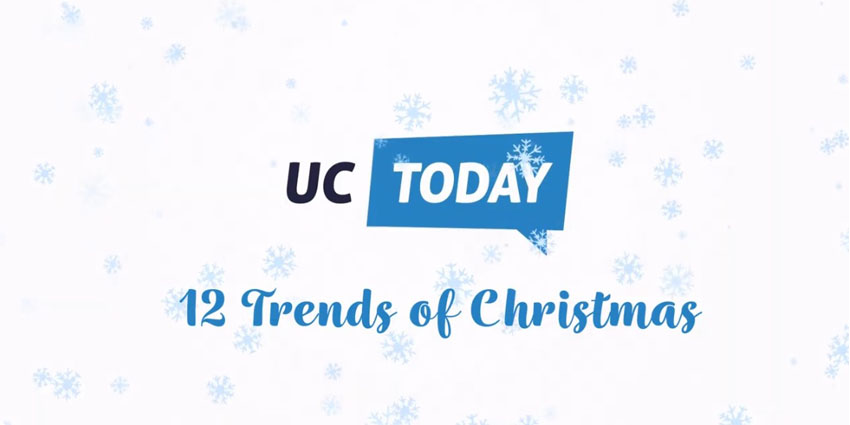No team plans to miss deadlines or lose track of priorities. But in reality, work gets messy, particularly with teams distributed worldwide. That’s the point where enterprise leaders start asking “what are project management tools, and what can they do for my staff?”
Work doesn’t follow a straight line. Priorities shift. People change roles. Deadlines move, sometimes by the hour. And without a system to hold it all together, everything stalls.
The best PM tools ensure everyone knows what’s happening, who’s doing what, and when it’s due. They help teams plan, track, and deliver, whether you’re overseeing client projects, building products, or coordinating internal operations.
For enterprise leaders, they also offer high-level visibility into progress, resources, and risks. That’s why around 85% of businesses are using project management technology – pretty much every day.
If you’ve ever juggled multiple tools to manage deadlines, documents, team updates, and client feedback, you already know why project organization tools matter. This guide explains what they do, how they’ve evolved, and how to choose the right platform.
What are Project Management Tools? The Basics
Project management tools are software applications. Specifically, they’re systems that help people plan, execute, and monitor projects at scale. These solutions come in various forms and sizes. Some are highly advanced, baking in AI-powered capabilities and end-to-end automation.
Others are simpler – intended to help keep the momentum going in projects, align teams, and support collaboration (without a lot of complexity). Overall though, the best PM software all does the same thing – help boost efficiency, productivity, and alignment.
Obviously, project management tools – just like most tech systems companies use today, have changed a lot over the years. In fact, “project management” as a concept dates back further than you’d think. In 1896, Karol Adamiecki introduced the “Harmonogram” for project management in the world. This design was then replaced by Henry Gantt in 1922, with the introduction of the Gantt chart, still used today.
The term “Project Management” was introduced later, in 1954, by the US Air Force. However, project management gained more relevance in the business world over time. Businesses started exploring new ways to manage projects, using Kanban boards and collaborative applications.
Today, these tools keep businesses moving forward. They empower companies to align employees, streamline workflows, and minimize wasted time (something we all haven’t got enough of).
What are Project Management Tools? Common Features
So what exactly do project management tools do? A better question might be, what don’t they?
Most modern platforms aren’t just digital checklists. They’re full work systems designed to help teams assign, prioritize, and deliver projects across departments, time zones, and working styles. The features vary, but some capabilities come up again and again:
- Task management: Every project starts with tasks. Good tools make it easy to create them, assign owners, attach deadlines, and track progress over time. Most support multiple views, like Kanban boards for visual thinkers or timeline modes for long-range planning.
- Resource allocation: Visibility matters. Who’s free? Who’s at capacity? Are we burning too much time on low-impact work? Smart tools surface that data so managers can rebalance workloads before problems creep in.
- Collaboration: Whether your team works side by side or halfway around the world, communication should never slow you down. The best project management collaboration tools now include everything from chat and video to document sharing and whiteboarding, all inside the same workspace.
- Planning tools: This is where strategy meets execution. Gantt charts, milestones, dependencies, the planning layer helps you map out not just what needs doing, but when and in what order.
- Reporting and analytics: Most project management tools include features for generating reports and insights. This gives teams visibility across the project lifecycle, and improves decision making.
- Integration and customization: Customization options and integrations allow companies to align their technical resources and enhance employee user experience. Some solutions even allow for task automation across apps.
- Automation: Automated tools can help businesses minimize repetitive tasks like proofing and approvals, sending request forms, or notifying teams of an upcoming deadline. Some AI-powered tools even automate entire workflows.
You’ll also find purpose-built features depending on your industry. Agencies might rely on client approval workflows. Engineering teams may prioritize sprint planning and GitHub syncs.
What are Project Management Tools Used For?
So, what are project management tools actually for? Why are they beneficial? The simple answer: they help teams get work done with less chaos, more visibility, and fewer delays.
PM tools benefit businesses of all sizes. Any organization that needs to manage and track projects and support team productivity can benefit from this software. But in practice, how companies use these tools depends on the type of work they do, and the structure of their teams.
Product teams might use project management tools to track development sprints or prioritize feature requests. Marketing teams might use them to plan campaigns, content, and events. Customer service teams often rely on project timelines for onboarding workflows or case resolution tracking.
But while the use cases differ, the benefits of project management tools are similar for most:
- Enhanced efficiency: Automation and AI can take care of routine admin work, from deadline reminders to task routing. Teams spend more time on actual work, less on coordination.
- Improved resource management: Managers can see who’s overloaded, who’s underutilized, and how best to distribute time and budget.
- Increased visibility: With shared dashboards and reporting, leaders can track progress without chasing updates. Problems surface earlier.
- Boosted productivity: Teams know what to work on, when it’s due, and who’s involved — cutting down on confusion and duplicated effort.
- More valuable insights: Data shows how long tasks take, what slows teams down, and where to improve processes over time.
It’s also worth noting how well these tools integrate with broader workplace platforms. Some of the best PM tools now live inside everyday collaboration hubs like Slack or Microsoft Teams. Others, like Salesforce’s Slack Lists, are built specifically to bridge messaging and project tracking in one place.
Ultimately, the right project organization tools act as a single source of truth. They reduce manual overhead, support better decision-making, and give teams the structure to scale effectively, without adding more meetings.
What are Project Management Tools? Popular Examples
There’s no shortage of platforms on the market, and they all claim to be the best project management tools for someone – agile teams, small businesses, large enterprises, etc. We can’t tell you which one to use, but we can share insights from the options we’ve tried ourselves.
Wrike
Wrike has been around for a while, and you can feel it. It’s one of the best project management tools built for scale, not just in terms of features, but in how teams actually use it. Larger companies like it because it adapts well across departments. One team might be planning a campaign. Another’s managing tickets. Wrike handles both without feeling cobbled together.
The platform offers the usual stuff: timelines, dashboards, workload balancing, all that. But what stands out is how it handles complex workflows without overwhelming you on day one. Project managers get automation and templates that actually save time, not just add another layer. And the integrations list is long: Salesforce, Teams, Adobe, Google Drive, the works.
Asana
Asana works because it doesn’t try too hard. The interface is clean. It’s fast. Once you’ve set up a few boards or timelines, it’s clear why teams stick with it. It’s especially popular with marketing and ops teams. The people who need to move fast, handle feedback, and keep projects transparent.
The automation tools help cut out follow-up emails and reminders, and the reporting is good enough that you don’t have to pull data into yet another dashboard. The AI features are impressive too, and they’re just getting better, with new upgrades like the Smart Workflow Gallery. If your team’s grown beyond spreadsheets but you’re not ready for a full-blown project management platform, Asana’s a solid middle ground.
ClickUp
ClickUp’s whole pitch is that it replaces half your stack: tasks, docs, goals, dashboards, whiteboards, even time tracking. For teams trying to reduce app fatigue, that’s a big plus. But it takes a little while to get it working the way you want.
You’ll find nearly every feature under the sun. You can build complex project organization tools, color-code everything, automate approvals, and link tasks across departments. But if your team just needs simple lists and check-ins, you might end up ignoring half the platform. It works best for hybrid or distributed teams that want control. It’s also one of the few platforms that scales nicely from small startup to enterprise without forcing a switch.
Microsoft Planner
If your company already uses Microsoft 365, and now you’re asking, “what are project management tools”, or “which are the best PM tools” – Planner is a good pick. It’s easy-to-use, AI-connected, and aligned with everything you already use. Teams, Outlook – the whole Microsoft stack.
In late 2023, Microsoft combined To Do, Planner, and Project into a more cohesive platform. Now, with Copilot built in, it’s easier to prioritize tasks, assign deadlines, and get visibility across projects. It’s not as customizable as something like ClickUp or Monday, but for teams looking for secure, compliant project management software that fits into their existing workflow, it’s a smart choice.
Monday.com
Monday.com gets a lot of love for its interface: bright colors, clean layouts, drag-and-drop everything. But there’s depth under the surface too. You can spin up dashboards that track budgets, campaigns, and timelines, all from one place. It also handles CRM workflows and hiring pipelines.
Automation is solid here. Set up a few rules and it’ll ping the right person when something’s due or change a status when a condition’s met. The platform also integrates with tools like HubSpot, Google Workspace, and Slack, which makes it a good fit for cross-functional teams that need visibility without friction.
Smartsheet
Smartsheet feels familiar if you’ve ever spent most of your day inside Excel, but it’s a lot more powerful than a spreadsheet. Under the hood, it’s doing full project management technology: task dependencies, resource management, reporting, even governance controls.
It’s especially popular with enterprise operations and PMOs. You can manage a national rollout, track field teams, and generate status reports for execs, all from one workspace. Smartsheet’s also strong on compliance. If you’re in a regulated industry, healthcare, finance, government, it handles audit trails and permissions better than most.
Airtable
Airtable sits somewhere between a database and a project organization tool, but without all the usual database headaches. You start with a grid, but you can switch views: Kanban, calendar, gallery, and filter or group records however you need.
It’s especially good for content teams, agencies, and marketers who need to manage campaigns, assets, or editorial calendars without bouncing between apps. You can create custom forms, build light automations, and even turn a base into a mini app if needed. In teams where “project management” also includes managing people, processes, and a lot of shared content, Airtable gives you room to build the system that works best for you.
Basecamp
Basecamp strips things back. No Gantt charts. No complicated dashboards. Just tasks, files, schedules, and built-in messaging, all in one clean interface. It’s especially popular with smaller teams or agencies that don’t need dozens of features, just a reliable place to stay organized.
The check-ins feature helps keep everyone aligned without adding meetings, and the flat-rate pricing (no per-user fees) makes it predictable for growing teams. If most PM tools feel like too much, Basecamp might be the reset you’re looking for. Just don’t expect the same advanced capabilities as some of the other best PM tools.
Notion
Notion started as a note-taking tool, but it’s turned into a powerful workspace for project-driven teams. Think tasks, docs, calendars, wikis, all in one place, fully customizable. It’s especially popular with startups and content teams. You can draft a blog post, assign it for review, track its status, and archive it in your team’s library, all without switching tools.
Now that Notion has added AI features (summarizing notes, generating action items, etc.), it’s becoming more of an intuitive project management collaboration tool than ever. It’s not perfect for highly structured teams, and it lacks some of the granular controls of bigger platforms. But if flexibility and creativity matter, Notion delivers.
Zoho Projects
Part of the extensive Zoho suite of business management tools, Zoho Projects is a fantastic project management platform. It aligns with the Zoho CRM, recruitment system, sales platform, and collaboration tools.
Plus, it can integrate with a range of third-party solutions. Zoho Projects specializes in task automation and management, allowing companies to create comprehensive blueprints for complex tasks. There are built-in issue management tools and fantastic Gantt charts for project visualization. Zoho Projects is free for up to 3 users, and premium plans start from a low price of only $5 per month per user.
Teamwork
As an all-in-one project management platform, Teamwork is ideal for agencies and customer-facing companies. It helps companies track their available resources and assign tasks to different staff members. Plus, it includes robust solutions for tracking client assets and project timelines.
Teamwork is highly customizable, allowing companies to prioritize the most critical tasks for their teams. It also includes features for time tracking, profit tracking, and reporting. You can even access innovative suggestions on how to scale and optimize your business. The free version is ideal for up to 5 users, while paid plans start at around $5.99 per month per user.
Jira
Part of the Atlassian Group product portfolio, Jira is a software development and PM tool. The solution helps companies plan comprehensive projects and assign tasks to team members based on their skills and availability. There are tracking tools to monitor performance, time spent on different tasks, and excellent reporting capabilities.
Jira also makes it easy to automate everyday tasks and maintain comprehensive visibility of your team’s work. The platform is also highly customizable, with different view options, and integrates various third-party tools. Once again, there’s a free plan for beginners, with paid plans starting at $7.75 per month per user.
Trello
Trello is where a lot of people first encounter Kanban, after asking “what are project management tools?” It’s a tool packed with columns, cards, and drag-and-drop capabilities. Intuitive, visual, and lightweight, Trello is a great choice for smaller teams or simpler workflows.
Over the years, it’s added more muscle. There are Power-Ups (integrations), automation tools, templates, and even AI features thanks to Atlassian’s acquisition. It now includes “Atlassian Intelligence” for card summaries and smart suggestions, making it more than just a digital sticky board. Trello’s strength is its simplicity. If you’re launching a content calendar, managing an event plan, or tracking feature development, it gives you enough structure without boxing you in.
Nifty
Nifty is something of a hidden gem, not as well-known as Jira or ClickUp, but gaining ground quickly. It’s especially good for distributed product teams that want everything in one place: tasks, timelines, chat, docs, and goal tracking.
You can create project milestones, track deadlines, collaborate on documents, and even automate workflows in one space. It has a more modern UI than Jira, with fewer layers to configure, but still gives you the visibility and control larger teams need. It’s also competitively priced, with free guest access and native integrations with tools like Google Drive, Slack, and Zoom.
How to Choose the Best PM Software
Now you know the answer to “What are project management tools?” you might wonder how to select the right one. There are dozens of options, and the right choice for you will depend on numerous factors. You’ll need a clear understanding of your company’s needs and processes and the functionality you need from the best PM software.
Here’s what to look for when narrowing down your shortlist:
- Feature sets: What features do you need from your PM tools? Do you want to be able to track and assign tasks? Do you need time-tracking capabilities, integrated reports, and innovative workflow automation tools?
- Simplicity:The best project management solutions should always be user-friendly. Look for a solution that requires minimal training. If you have complex requirements, check your software comes with resources and documentation for beginners.
- Scalability:An innovative project management platform should scale to suit the needs of your business. It should have a clear pricing structure that makes adding new users and leveraging the functionality you need easy without paying for unnecessary features.
- Flexibility: Ideally, your PM software should integrate with and work alongside the tools you already use. Consider the existing software in your technology stack and where connections between apps will be the most valuable.
- Security:Ensure your project management tool can store, share, and manage data compliantly. Your solution should adhere to your policies for data management and access controls, reducing unnecessary risk.
Remember pricing and TCO too. Many project organization tools seem affordable at first, but costs can scale quickly. Look beyond headline pricing and consider what features you’ll actually use, how many users you’ll onboard, and whether you’ll need support or training.
AI and the Future of The Best PM Software
Artificial intelligence is quickly changing how we manage work itself. In today’s leading project management tools, AI is pretty commonplace. Some tools have built-in AI assistants, others have AI-powered analytics systems.
Assistants in tools like ClickUp and Asana can now auto-generate tasks, draft updates, and even surface project risks based on activity. Even Microsoft Planner is evolving to include Copilot features, allowing users to ask natural-language questions about timelines or progress.
Some platforms are beginning to use AI to identify bottlenecks before they happen, reassign workloads dynamically, and offer coaching-style nudges based on team performance data. If you’re planning on upgrading your PM software right now, look for:
- Natural language search and reporting
- Predictive resource allocation
- Smart suggestions for deadlines or task assignments
- Contextual summaries of project progress
It’s still early days, but it’s clear that AI-enhanced tools in project management will soon become the standard for most enterprises. It’s a good idea to get ahead now.
Understanding the Value of Project Management Tools
Project management tools might seem like one of those “checkbox” solutions you integrate without much thought. But really, they’re all about visibility, clarity, and efficiency. The best PM tools bring people together, connecting priorities and progress in a shared space.
They stop information from disappearing, keep employees aligned, and help businesses take a more controlled approach to “getting things done”. The key is finding a tool that fits your workflows, integrates with your existing systems, and meets your team where they are, without overcomplicating the process.
Need more guidance? Check out buyers guides, reviews or market resources.
- Download our latest research reports for up-to-date insights
- Share project management tips with our UC Community
- Head to upcoming industry events for demos and face-to-face discussions
Alternatively, view our Unified Communications guide, to learn how project management tools align with all the other crucial components of a thriving enterprise tech stack.
FAQs
What is a project management tool?
Project management tools are systems that help companies plan and manage projects more effectively. They include features for scheduling, task assignment, collaboration, reporting, automation – you name it.
What are the best project management tools in 2025?
Some of the best PM tools in 2025 include Wrike, ClickUp, Asana, Microsoft Planner, Monday.com, Airtable, Jira, Trello, and Zoho Projects. The best choice depends on your team’s size, workflows, integrations, and specific needs.
What are project management tools used for?
Project management tools increase productivity and workplace efficiency. They provide the structure, guidance, and support companies need to manage projects. Features like task assignment and scheduling, notifications, and progress tracking help align teams.
Are there free project management tools available?
Yes. Many tools offer free tiers, including ClickUp, Trello, Zoho Projects, Freedcamp, and Teamwork. These are especially popular with startups, freelancers, and small businesses. Just remember, you might miss out on some advanced features.
Which tools do project managers use most?
It varies by industry, but common tools project managers use include Gantt charts, Kanban boards, resource trackers, and reporting dashboards, often built into platforms like Wrike, Microsoft Planner, Jira, and Monday.com.







